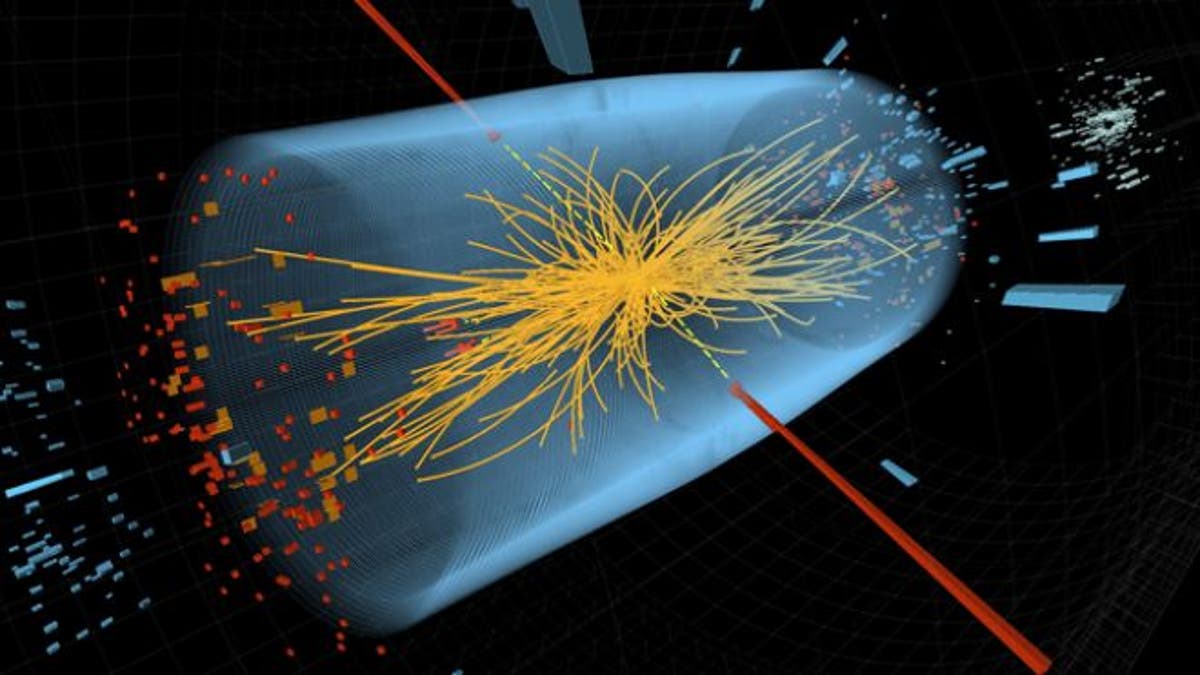
Dec. 10, 2011: Two high-energy photons shown as red towers are smashed together in the LHC. The yellow lines are the measured tracks of other particles produced in the collision -- possible evidence in the hunt for the Higgs Boson. Read more: http://www.foxnews.com/scitech/2011/12/13/search-closes-in-on-elusive-higgs-particle/#ixzz1oRVvyJhr (CERN)
GENEVA – Scientists working at the world's biggest atom smasher plan to announce Wednesday that they have gathered enough evidence to show that the long-sought "God particle" answering fundamental questions about the universe almost certainly does exist.
But after decades of work and billions of dollars spent, researchers at the European Organization for Nuclear Research, or CERN, say they aren't quite ready to say they've "discovered" the particle.
Instead, experts familiar with the research at CERN's vast complex on the Swiss-French border say that the massive data they have obtained will essentially show the footprint of the key particle known as the Higgs boson -- all but proving it exists -- but doesn't allow them to say it has actually been glimpsed.
It appears to be a fine distinction. Senior CERN scientists say that the two independent teams of physicists who plan to present their work at CERN's vast complex on the Swiss-French border on July 4 are about as close as you can get to a discovery without actually calling it one.
"I agree that any reasonable outside observer would say, `It looks like a discovery,"' British theoretical physicist John Ellis, a professor at King's College London who has worked at CERN since the 1970s, told The Associated Press. "We've discovered something which is consistent with being a Higgs."
CERN's atom smasher, the $10 billion Large Hadron Collider, has been creating high-energy collisions of protons to help them understand suspected phenomena such as dark matter, antimatter and ultimately the creation of the universe billions of years ago, which many theorize occurred as a massive explosion known as the Big Bang.
For particle physicists, finding the Higgs boson is a key to confirming the standard model of physics that explains what gives mass to matter and, by extension, how the universe was formed.
Rob Roser, who leads the search for the Higgs boson at the Fermilab in Chicago, says "particle physicists have a very high standard for what it takes to be a discovery" and thinks it is a hair's breadth away.
Rosen compared the results scientists are preparing to announce Wednesday to finding the fossilized imprint of a dinosaur: "You see the footprints and the shadow of the object, but you don't actually see it."
